1. Early Life and Background
Anne's early life was shaped by her birth in Hanover and her upbringing within the British royal family, which included a significant childhood illness and a comprehensive education.
1.1. Birth and Childhood
Anne was born at Herrenhausen Palace in Hanover, five years before her paternal grandfather, Elector George Louis, ascended to the thrones of Great Britain and Ireland as George I. She was christened shortly after her birth at Herrenhausen Palace and named after her paternal grandfather's second cousin, Anne, Queen of Great Britain.
In 1720, Anne contracted and survived smallpox. Two years later, her mother, Queen Caroline, played a crucial role in popularizing the practice of variolation, an early form of immunisation against smallpox. This practice had been observed by Lady Mary Wortley Montagu and Charles Maitland in Constantinople. Under Queen Caroline's direction, six prisoners condemned to death were offered variolation instead of execution; all survived. Six orphan children were then given the same treatment as a further test, and they also survived. Convinced of its medical value, the Queen successfully inoculated her two younger daughters, Amelia and Caroline. Despite surviving, Anne's face was scarred by the disease, leading her to be considered less attractive than her younger sisters.
1.2. Education and Early Activities
Anne received a comprehensive education, learning German, French, and English. She was also tutored in music, including singing, harpsichord, and composition, by the renowned composer Georg Friedrich Händel. Händel, who generally disliked teaching, made an exception for Anne, referring to her as the "flower of princesses." She remained a lifelong supporter of Händel, regularly attending his operas and subscribing to his musical works.
On 30 August 1727, her father, George II, bestowed upon her the title of Princess Royal. This title had been out of use since its creation by Charles I for his daughter, Mary, Princess of Orange, in 1642, making Anne the second daughter of a British sovereign to hold this distinction.
In 1725, a potential marriage alliance between Anne and King Louis XV of France was considered. From a French perspective, such a marriage could have offered valuable neutrality from the Netherlands and Prussia, as well as protection against Spain. However, religious differences posed a significant obstacle. While it was assumed Anne would convert to Catholicism, concerns arose regarding the Pope's support, especially in light of Louis XV's broken betrothal to a Spanish princess. Furthermore, the prospect of Anne becoming Regent of France during a minor regency was feared due to her presumed religious inclinations towards the Huguenots in France. The plans were ultimately discarded when the French insisted on her conversion to Roman Catholicism.
2. Marriage and Family
Anne's marriage to William IV, Prince of Orange, marked a significant turning point in her life, leading her to the Netherlands and establishing her own family.
2.1. Marriage to William IV
On 25 March 1734, Anne married William IV, Prince of Orange, in the Chapel Royal at St. James's Palace in London. Following her marriage, she ceased using her British title in favor of her new one as Princess of Orange. For her wedding, Händel composed the music for the anthem This is the day, set to the princess's own words based on Psalms 45 and 118. Händel also created an operatic entertainment, Parnasso in Festa, in honor of her wedding, which premiered at the King's Theatre in London on 13 March 1734, achieving great success. Nassau Street, Soho, London (renamed Gerrard Place in 1910) was named in commemoration of the marriage.
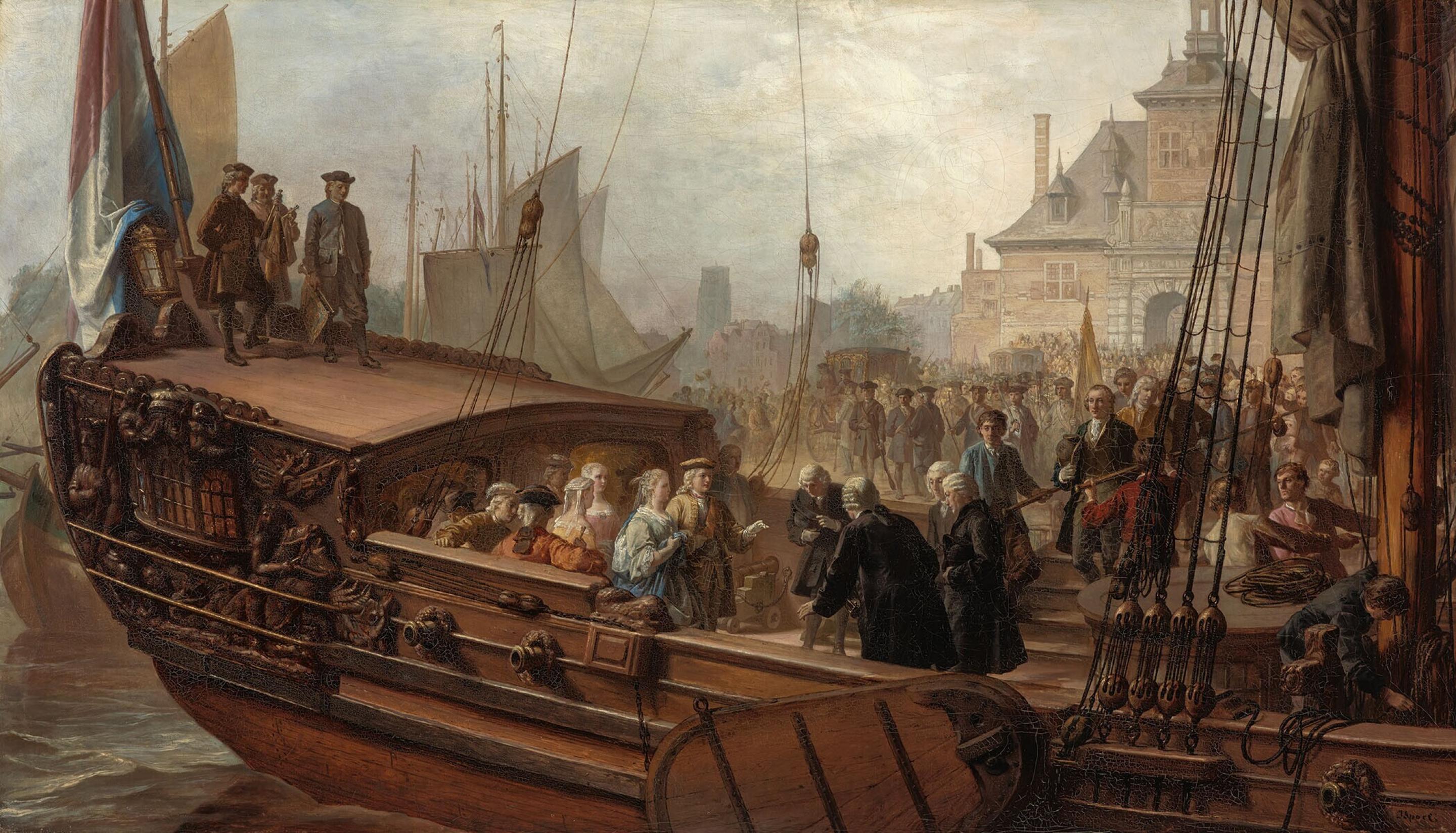
Despite William suffering from a spinal deformity that affected his appearance, Anne reportedly declared she would marry him even "if he were a baboon." Her strong insistence on this marriage stemmed from her desire to avoid a life as a spinster at the court of her father and brother, with whom she had a strained relationship. As William was essentially her only remaining Protestant choice for a suitable royal match, she conveyed to her father that the question was not whether she should marry William, but rather whether she should marry at all. Her decision led to a quarrel with her brother, Frederick, Prince of Wales.
After a honeymoon at Kew, William and Anne sailed to Holland, where they resided at Leeuwarden. Anne soon felt homesick when William went on campaign in the Rhineland. Believing herself to be pregnant, she traveled back to England, thinking she should give birth to the child in her homeland due to its place in the succession to the British throne. However, this decision was not well received by her husband or her father, who both commanded her to return to Holland after a brief stay. By April 1735, it became clear that Anne was not pregnant. In 1736, she did become pregnant, but the child, a daughter, was stillborn.
2.2. Children
Anne and William IV had five children, though only two survived to adulthood:
- Stillborn daughter (1736)
- Stillborn daughter (1739)
- Princess Carolina (born 28 February 1743, died 6 May 1787). She married Charles Christian, Prince of Nassau-Weilburg on 5 March 1760 and had issue.
- Princess Anna (born 15 November 1746, died 29 December 1746).
- William V, Prince of Orange (born 8 March 1748, died 9 April 1806). He married Princess Wilhelmina of Prussia on 4 October 1767 and had issue.
3. Role as Princess Consort of Orange
As the wife of William IV, Anne's life in the Netherlands was marked by her adaptation to Dutch society, her cultural pursuits, and her evolving relationship with her husband.
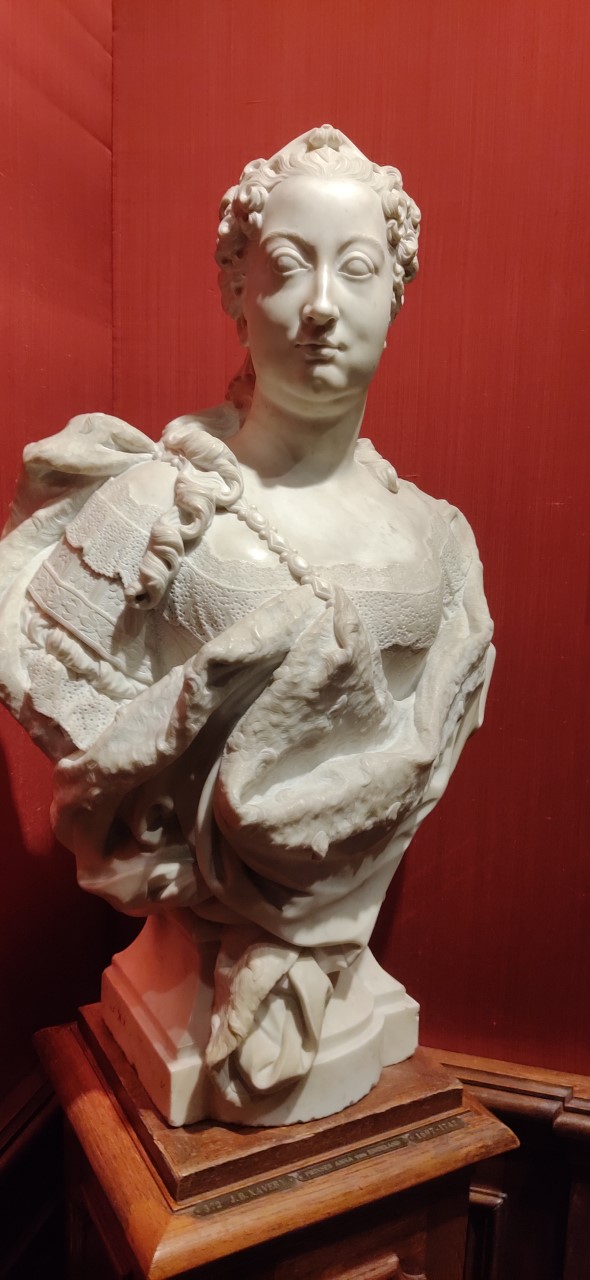
Anne was not well-liked by the Dutch people and did not get along with her mother-in-law, Marie Louise of Hesse-Kassel. While she was considered to possess a regal essence, she appeared to harbor a belief in British superiority over the Dutch. She was also perceived as neglectful of her duties, seemingly isolating herself in her interests in music and literature. Furthermore, she was accused of showing little consideration for her courtiers, for instance, by forcing her ladies-in-waiting to read for her for hours, disregarding their fatigue. Despite an initially distant relationship, her correspondence reveals that her bond with William eventually developed into harmony and intimacy.
In 1747, with British backing, William became stadtholder of all the Seven United Provinces, a position that was subsequently made hereditary through a constitutional reform. Following this, William and Anne relocated to The Hague. Anne continued her patronage of Händel, inviting him to participate in her musical life at The Hague in 1750. The composer Josina van Aerssen served as one of her ladies-in-waiting.
4. Regency of the Netherlands
Upon the death of her husband, Anne assumed the critical role of regent for her young son, navigating the complex political landscape of the Netherlands and working to consolidate the power of the stadtholderate.
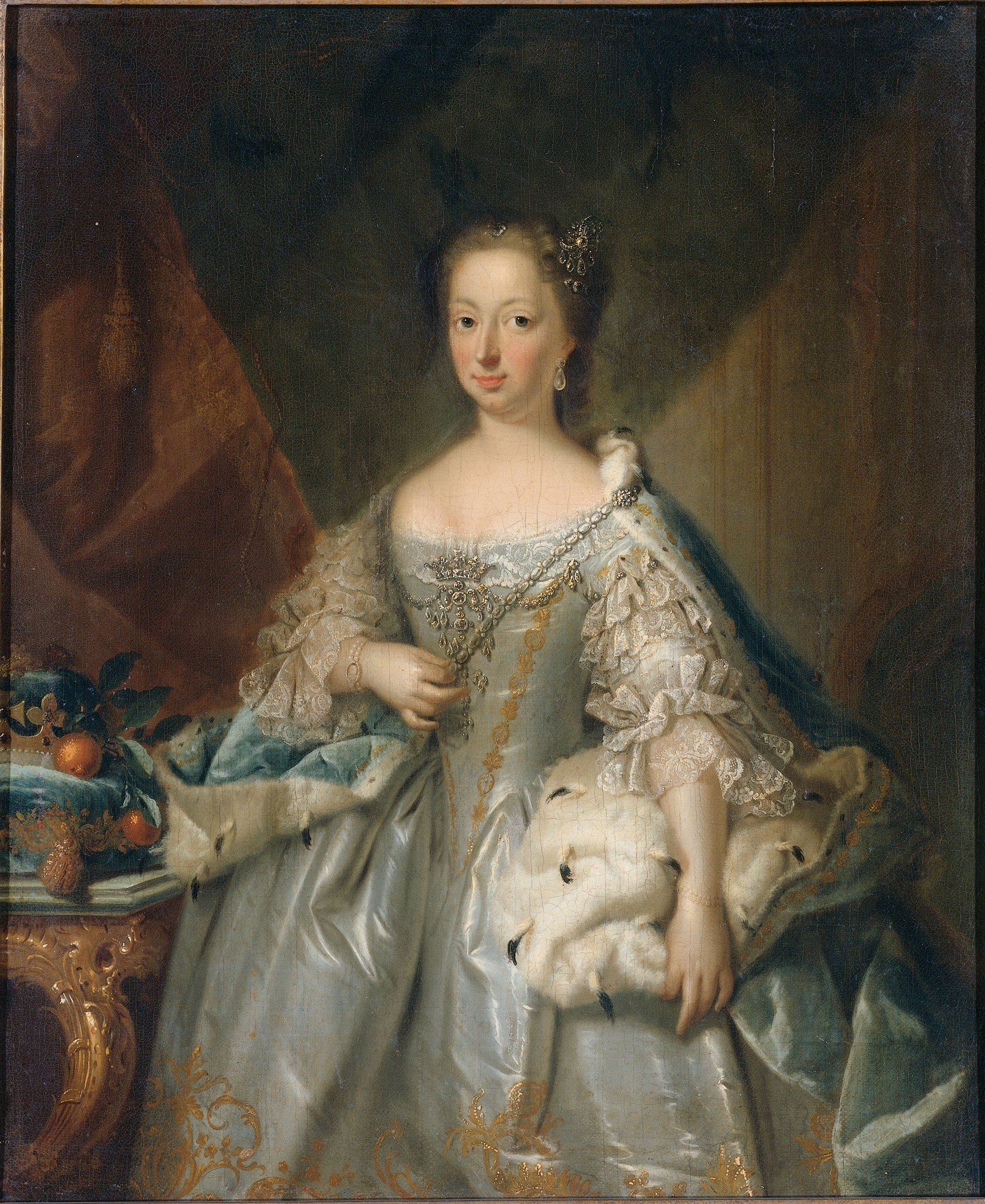
William IV died on 22 October 1751, at the age of forty. Anne was subsequently appointed as regent for her three-year-old son, William V, Prince of Orange. In this capacity, she gained all the prerogatives typically held by a hereditary stadtholder of the Netherlands, with the exception of the military duties, which were entrusted to Duke Louis Ernest of Brunswick-Lüneburg. While she was known to be hard-working, her arrogant and imperious demeanor made her unpopular among the Dutch populace. The 1750s were a period of increasing tension and commercial rivalry between the Netherlands and Great Britain, which placed Anne in a particularly difficult position during her regency.
4.1. Domestic Policy
Anne's domestic policy was primarily focused on defending the authority of the central hereditary stadtholder government against the traditional rights of the individual Dutch states. The reform establishing the hereditary nature of the stadtholder post had been introduced during her late husband's reign; it was a new and controversial change that faced challenges after his death. However, Anne effectively defended the centralized government, ensuring its continued power. For example, in a conflict with the city of Haarlem, she prevented the city from holding its election by refusing to release its list of candidates. Although her strict and often harsh rule was resented by many, her consolidation policies were effective in securing the new hereditary Stadtholder rule in the Netherlands.
4.2. Foreign Policy
In her foreign policy, Anne strongly favored an alliance with Britain and the Emperor over France. This stance was not popular in the Netherlands, a nation that historically sought to balance its relationships with major European powers. Her efforts to fortify the southern provinces against the French Netherlands also met with significant opposition. Despite her Anglophile tendencies and her close ties to the British royal family, Anne was ultimately unable to convince the Dutch Republic to enter the Seven Years' War on the side of the British, highlighting the limitations of her influence in shaping Dutch foreign relations.
5. Art and Cultural Contributions
Anne possessed a keen interest in the arts, particularly in visual arts and music, and actively engaged in creative pursuits and patronage.
The princess took drawing and painting lessons from Herman van der Mijn. In 1740, she created a self-portrait, which is now part of the collection of the House of Orange-Nassau Historic Collections Trust. She also painted a portrait of van der Mijn himself while he was working on portraits of other members of her family. Beyond her own artistic endeavors, Anne was a lifelong supporter of the composer Georg Friedrich Händel, attending his operas and subscribing to his music. She extended her patronage to the Netherlands by inviting Händel to participate in her musical life at The Hague in 1750.
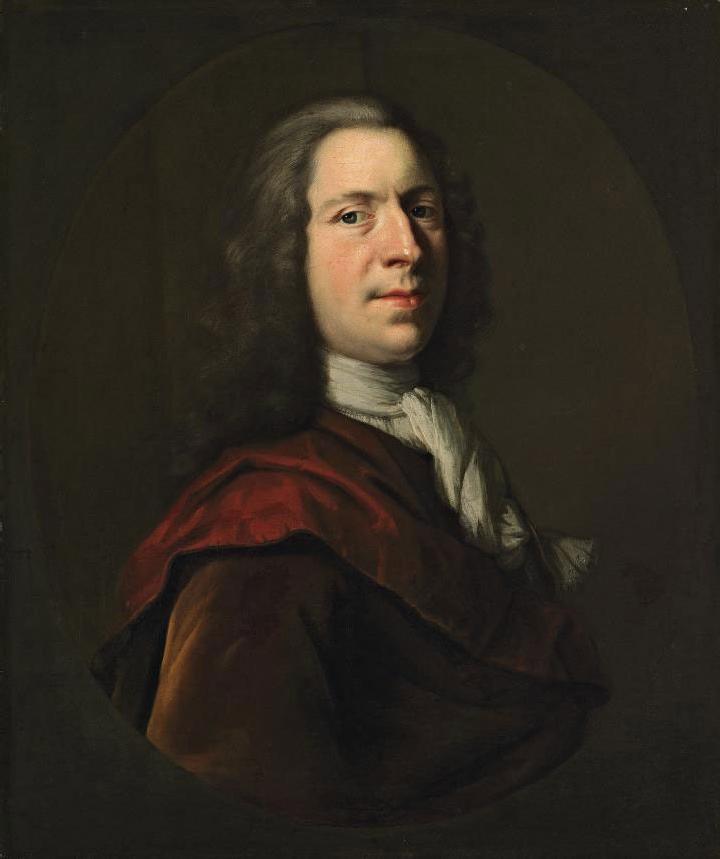
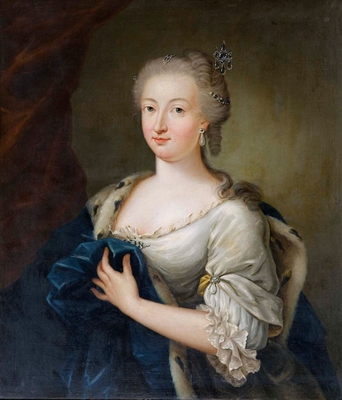
6. Political Views and Governance
Anne's political views were deeply influenced by her British heritage, leading to a preference for centralized authority and a strong alliance with Great Britain.
6.1. Political Tendencies
Anne's political leanings were distinctly Anglophile, reflecting her English upbringing and family connections. She consistently supported a centralized form of rule within the Dutch Republic, aiming to strengthen the authority of the stadtholderate. This approach was a departure from the traditional decentralized structure of the Dutch states and often put her at odds with various factions within the Republic. Her foreign policy decisions were also heavily influenced by her pro-British sentiments, as evidenced by her preference for the British alliance and her efforts to fortify the southern provinces against French influence. These policies, while reflecting her personal convictions, were frequently met with opposition in the Netherlands, where a more neutral or balanced foreign policy was often preferred.
7. Personal Life and Relationships
Anne's personal life was characterized by complex relationships with her family members and a strong sense of personal resolve.
Her relationship with her brother, Frederick, Prince of Wales, was strained, particularly concerning her choice of husband. Despite an initially distant dynamic, her marriage to William IV eventually developed into a harmonious and intimate partnership, as evidenced by their correspondence. However, her interactions with her mother-in-law, Marie Louise of Hesse-Kassel, were not amicable, and she was generally not well-liked by the Dutch populace. This unpopularity stemmed partly from her perceived belief in British superiority over the Dutch and her tendency to isolate herself in her personal interests in music and literature. She was also criticized for being neglectful of her duties and inconsiderate of her courtiers, such as reportedly forcing her ladies-in-waiting to read for her for extended periods, regardless of their fatigue.
8. Death
Anne continued to serve as regent until her death from dropsy on 12 January 1759, at The Hague. Following her death, her mother-in-law, Marie Louise of Hesse-Kassel, assumed the regency for William V, assisted by Duke Louis Ernest of Brunswick-Lüneburg. When Marie Louise died in 1765, Anne's daughter, Carolina, was made regent until William V reached the age of eighteen in 1766.
9. Legacy and Evaluation
Anne's historical significance is multifaceted, encompassing her contributions to the House of Orange and the Dutch Republic, as well as the criticisms she faced during her regency.
9.1. Positive Contributions
Despite the opposition she encountered, Anne's rule as regent effectively secured the new hereditary Stadtholder rule in the Netherlands. Her efforts to defend and consolidate the authority of the central government were successful in establishing a stronger, more unified leadership for the House of Orange. This consolidation was crucial in a period of political flux and laid the groundwork for the future of the stadtholderate.
9.2. Criticisms and Controversies
Anne's regency was marked by significant criticisms and controversies. She was widely perceived as arrogant and imperious, traits that contributed to her unpopularity among the Dutch. Her belief in British superiority over the Dutch was also noted, along with accusations of neglecting her duties and isolating herself in her personal interests. Her governing style was often described as harsh, leading to resentment among the populace. Her strong Anglophile foreign policy, particularly her preference for the British alliance over the French, was unpopular in the Netherlands, and her efforts to fortify the southern provinces against the French were met with great opposition. Her inability to persuade the Dutch Republic to join Britain in the Seven Years' War underscored the limitations of her influence and the strength of opposing sentiments within the Republic. Some historical accounts also suggest a resemblance in her portraits to later Dutch monarchs, such as Queen Beatrix.
9.3. Named Places and Enduring Influence
Princess Anne, Maryland, a town in the United States, is named in her honor, reflecting her historical presence beyond Europe. Her actions, particularly in consolidating the hereditary stadtholderate, had a lasting impact on the governance of the Dutch Republic and the trajectory of the House of Orange.
9.4. Arms

On 31 January 1719, as a grandchild of the sovereign, Anne was granted the use of the arms of the realm, differenced by a label argent of five points, each bearing a cross gules. On 30 August 1727, as a child of the sovereign, Anne's difference changed to a label argent of three points, each bearing a cross gules.
10. Family and Ancestry
Anne's family connections linked her to several prominent European royal houses, reflecting her status as a key figure in 18th-century European dynastic politics.
10.1. Ancestors
Anne, Princess Royal and Princess of Orange, was descended from a long line of European royalty and nobility. Her ancestry can be traced as follows:
- 1. Anne, Princess Royal
- 2. George II of Great Britain
- 3. Princess Caroline of Brandenburg-Ansbach
- 4. George I of Great Britain
- 5. Duchess Sophia Dorothea of Brunswick-Celle
- 6. John Frederick, Margrave of Brandenburg-Ansbach
- 7. Princess Eleonore Erdmuthe of Saxe-Eisenach
- 8. Ernest Augustus, Elector of Hanover
- 9. Princess Sophia of the Palatinate
- 10. George William, Duke of Brunswick-Lüneburg
- 11. Éléonore Desmier d'Olbreuse
- 12. Albert II, Margrave of Brandenburg-Ansbach
- 13. Countess Sophie Margarete of Oettingen-Oettingen
- 14. John George I, Duke of Saxe-Eisenach
- 15. Johannetta, Countess of Sayn-Altenkirchen
- 16. Georg of Braunschweig-Calenberg
- 17. Anne Eleonore of Hesse-Darmstadt
- 18. Friedrich V of Pfalz
- 19. Elizabeth of England and Scotland
- 20. Georg of Braunschweig-Calenberg
- 21. Anne Eleonore of Hesse-Darmstadt
- 22. Alexandre Desmier d'Olbreuse
- 23. Jacquette Poussard du Bas-Vandré et de Saint-Marc
- 24. Joachim Ernst, Margrave of Brandenburg-Ansbach
- 25. Sophie of Solms-Laubach
- 26. Joachim Ernst, Count of Oettingen-Oettingen
- 27. Anna Sibilla of Solms-Sonnenwalde
- 28. Wilhelm, Duke of Saxe-Weimar
- 29. Eleonore Dorothea of Anhalt-Dessau
- 30. Ernst, Count of Sayn-Wittgenstein
- 31. Louise Juliane of Erbach